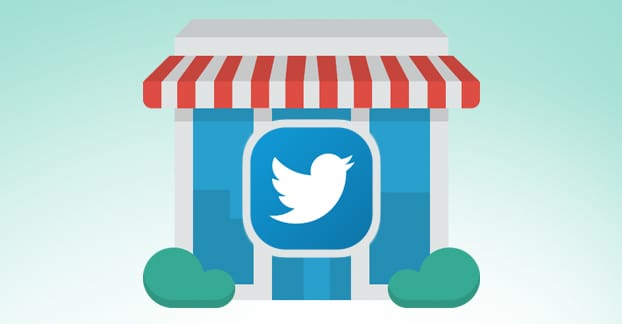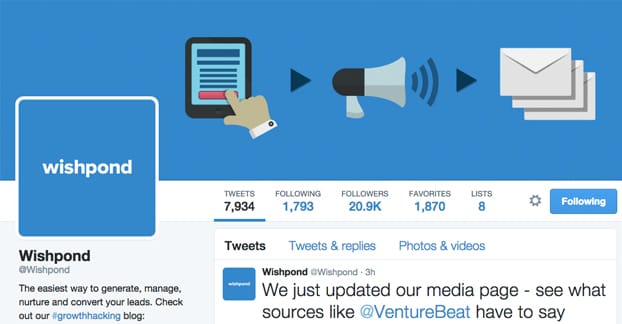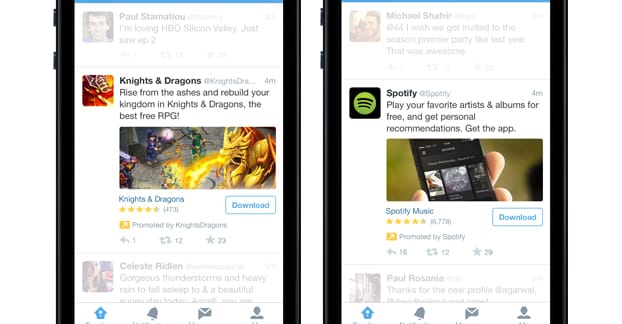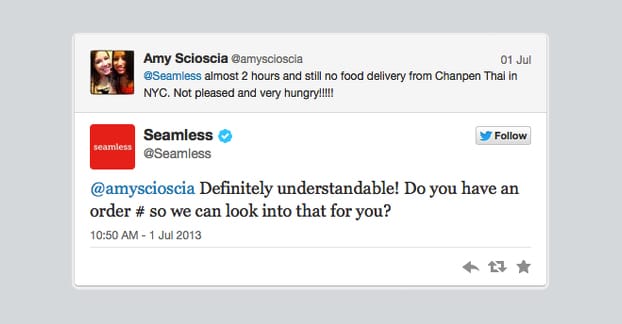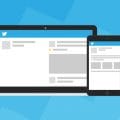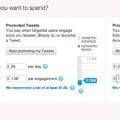Twitter is a strange platform for outsiders to grasp. What can you do with such a tight character limit? How does all this tagging stuff work? How can this possibly benefit your business? It just seems like such a big waste of time, particularly when most of the content you see people share from the site is jokes or memes.
Well, I’m here to tell you that Twitter is possibly one of the most beneficial networks to use as a small business. Is that surprising? It’s not quite on the same tier as Facebook, but I’d argue it’s #2 or #3, depending on how strongly you use LinkedIn for recruitment and employee networking. I don’t even rank Google+ that highly, though it’s essential to at least fill out a profile if you’re a local business. That’s a topic for another post, though.
Twitter is great for a handful of different roles, so I’m going to cover each of them in turn.
1. Building a Brand Presence
The number one reason to use Twitter is to simply show that you exist and that you’re aware of modern marketing trends. It’s a confidence builder with young audiences these days. A lot of people, when they want to see whether or not they can interact with and trust your brand, will look for your web presence. Younger people especially tend to be wary of businesses that don’t have an online presence, because they’re not speaking on the same wavelength. If you don’t have a web presence, they wonder, are you even still a valid business? People like to be as informed as possible before they do business with you.
By showing you’re hip to modern trends, you’re building confidence in your business, even if you’re not really using Twitter to the best of its ability. Obviously, you’ll do better the better you do with the site, since you’ll grow a bigger audience and get more conversions, but even a baseline is good.
- Include social sharing buttons on your website. You can get some very easy to implement plugins to match the buttons to your site design, so all you need to do is test positioning and size of the buttons.
- Include a “tweet this” plugin on your blog. This plugin will allow users to highlight parts of your blog posts and tweet them as-is, or will allow you to set up custom premade tweets users can post with one click. Either way, they’re a good second step of integration.
- Monitor the people who tweet mentioning you, both by tagging you direction using your @username and by simply mentioning you. You can track both using Twitter’s native search. You can get a lot of useful information out of this, including positive and negative reviews, potential customer service issues, and usership statistics.
- Post every day. There are a lot of possible options, so there’s never a real reason to go days without tweeting. You can turn yourself into a hub of news, a trend monitor, or just an amusing presence to follow.
The bottom line is to be active and integrated, even if you’re not particularly good at using the site. Twitter is a pretty forgiving place; you might not grow as fast as you would if you were a pro, but there’s always time to learn.
2. Sharing Content and Building Awareness
The second major role Twitter plays for a small business is raising brand awareness, content awareness, and general knowledge of your brand. You can use Twitter to reach a much wider audience than just about anywhere short of Facebook can get you. There are hundreds of millions of people using the site, after all. Even if you get a fraction of a percent, that’s still a huge audience for a small business.
The number one form of content you want to share is just your own blog content. However, Twitter is a little unforgiving when it comes to accounts that do nothing but promote themselves. You’re going to need to splice that content in along with content you share from other accounts. I recommend checking out your partners and other businesses in the same niche – so long as they aren’t direct competitors – and sharing their content. By adding commentary of your own, you’re bringing value to the table, so people in your audience get something out of it.
If you’re running an event or a sale of some kind, Twitter is a great place to advertise it. It’s a fast moving platform with a short memory for most things, which makes it ideal for publishing time-sensitive content. A one-day sale can be advertised on Twitter and you can be pretty certain people won’t be seeing the message the next day. This is in contrast to a site like Facebook, where the algorithm might be showing your sale post to people for a week after it ends, unless you take the post down.
You can also run offers exclusive to Twitter, which entices people to follow your account. It can be as simple as “mention Twitter in store for an additional 10% off” to full-on free products on offer when a user takes the right steps to claim them.
Contests are great as well. A social media contest can get a bunch of additional engagement and follows, so long as you run the right kind of contest. One thing I’m always careful to say to anyone running a contest is to make sure you’re picking the right kind of prize. Give away something attractive to your followers, not something attractive in general. If you’re giving away a $50 VISA gift card, you’ll get a ton of people entering the contest to win the money, but they won’t necessarily care about your brand. You’ll end up with a post on SlickDeals and you’ll be swamped with followers who will leave the moment the contest is over. Meanwhile, give away your product, and you get people who are interested in your product.
3. Networking with Industry Influencers
The third use of Twitter for a small business is networking. There are a lot of other businesses out there, on your tier or higher, that can benefit you in some way. There are also a lot of people on Twitter who may be fans of your business, either in reality or in potential. When the people who are your fans happen to have large followings of their own, you get to benefit from that engaged audience whenever that influencer shares a tweet of yours or mentions you.
The idea here is to network with these people and brands. Share their content and post content you think they’ll like so they can share it. Mention them in conversations where they would be relevant. If you’re feeling cheeky, you can even reach out to them and ask them about some kind of partnership, either for Twitter benefit or for some greater benefit outside of Twitter.
You can read all about influencer marketing here, and many of the tips will apply to other networks as well. Facebook has influencers, Google+ has influencers, and the concept is all the same. Get the attention of people who have a lot of followers, and get them to advocate for you. It’s like growing a much larger audience temporarily, by targeting one person.
Note that a lot of the tools Kissmetrics includes in their list are available for Facebook as well, and all of the same influencer techniques work there too. Facebook influencers are a little harder to get to advocate on your behalf, of course; the weight and value of a single post on Facebook is higher than that of a tweet, since tweets are short and posted multiple times per day.
4. Providing Timely Customer Service
Possibly my favorite use for Twitter, and the one I recommend to everyone even if they don’t want to do active marketing on the site, is customer service. Think of it like email customer service, only faster and more responsive.
When a customer messages you with an issue, you want to fix that issue for them. Twitter is a great way to do this. I’ve seen power companies use it to give updates on restoration information. I’ve seen ISPs help troubleshoot routers. I’ve seen restaurants issue discounts. I’ve seen tech help. No matter what your business does, if you have customers, and those customers have issues, you can fix those issues.
There are two styles of customer service; native and separate. Native customer service is when you have a @brand account and do customer service and marketing both through it. Separate customer service is when you have @brand for your marketing and @brandCS for your customer service. Both are equally valid. The second option simply allows you to keep all your CS in a separate location for aggregation and monitoring. It does, however, mean your main account will have to refer people to your CS account for help, which can be annoying.
There are also the different types of customer service, active and passive. Passive customer service is the majority if your work; you’ll be waiting for people to contact you with issues, and you will work to resolve them, however you need to.
Active customer service is a little more complicated. The idea is to monitor searches for untagged mentions of your brand and your product. Many of them will be ambivalent or positive, but some of them will be negative. Even though you didn’t get a notification and they didn’t message you directly, you can send them a message saying you noticed their tweet and that you’d like to help resolve their issues. Being proactive with your customer service can come off as a little creepy to some people who don’t realize how public all of their online information is, but it’s also very helpful to people who don’t realize their issue has a simple fix.
I do recommend cross-referencing their information, if they have real information in their Twitter account, with other ongoing tickets. It’s possible someone has an open ticket and is just using Twitter to vent; approaching them with an offer to help is redundant when you’re already working on it.
5. Soliciting Feedback and Insights into Customers
One of the best ways to get feedback about your brand is not sending out suggestion cards or asking for feedback on a receipt; its to ask via social media. You can ask questions about problems people are having, things they would like to see your brand do, and anything else that strikes your fancy. When you ask, you shall receive, and that information can be used to further better your online presence, your business in general, and your products.
You’re going to get some comments that are valueless. Some people will say you’re doing great, and that’s fine; you have pleased customers. Some people will have suggestions that are so far outside the realm of possible that you can’t help but laugh, but that’s fine too. It’s good that people like your products enough to suggest off the wall features. Some people will suggest integration with products other businesses make, and if you can implement them, that’s good. Demand for new features can make those features valuable. Some suggestions will lead to bug fixes and support.
Over all, the idea is to be present on Twitter as much as possible, interacting with your followers and using their information to improve yourself. As you improve, you’ll gain more followers, and the broader audience will have the occasional deeper insight. This cycle can repeat as long as you can support the growth. It’s why it’s always worth the time of setting up and running a Twitter account.
You can always hire someone else to run your account too, if you want. You need to keep them closely linked with your business, of course; they need to be able to handle customer service and issues that come up appropriately. I recommend against outsourcing to India for your customer service, but you do whatever works for you.
